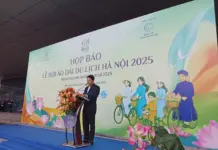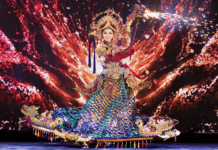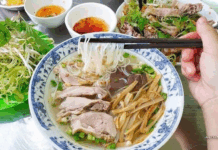Over the past years, in parallel with boosting economic development, Gia Lam district has also paid special attention to improving socio-cultural aspects, including relic restoration as well as the protection and promotion of special cultural values of the locality.
|
Ba Tam pagoda in Gia Lam district. Photo: Hong Hanh (Kinh te & Do thi) |
A number of relic sites, unique festivals
Located in an ancient land where the two cultures of Thang Long and Kinh Bac intersect, Gia Lam boasts a total of 318 relic sites, of which 157 are national- and city-level relics and 16 places are revolutionary vestiges.
In addition, all of its village festivals have been recognized with different levels of acknowledgment, including Giong festival (Phu Dong commune), a UNESCO world heritage; Chu Xa festival (Van Duc commune), a national intangible cultural heritage; as well as the celebrations at Nanh pagoda celebration (Ninh Hiep commune); Sui pagoda (Phu Thi commune); Ba Tam temple – pagoda (Duong Xa commune); Bat Trang commune, among others.
However, many relics have deteriorated seriously and need urgent restoration. Since 2016, the People’s Committee of Gia Lam district has reviewed and map out restoration project for over 100 relics. In 2020, the district continued repairing 23 relics with a total cost of about VND500 billion (US$21.5 million)-VND600 billion (US$25.7 million), and nine of them have been completely rehabilitated.
In the vestige restoration work, the district has called for the participation of private resources with a total contribution of nearly VND80 billion (US$3.43 million).
Modernization of management
|
A relic site in Gia Lam district. Photo: Hoang Quyet (Kinh te & Do thi) |
Since 2017, in a bid to strengthen the management, conservation and promotion of the value of the relics, Gia Lam district has taken inventory of 197 relics and thousands of artifacts.
Head of Gia Lam district’s Information and Culture Division Phung Thi Hoai Huong said that during the stocktaking process, many artifacts of great historical and cultural value have been found. Currently, Gia Lam has three antiquities recognized as national treasures, including the statue of Quan The Am (Guanyin) dating from the 16th century at the Dao Xuyen Pagoda, Da Ton Commune; the twin stone lions from the 12th century and the golden lacquered wood altar from the 16th century kept in the Ba Tam pagoda, Duong Xa commune.
However, the restoration and protection of relics and artifacts in Gia Lam are also facing many difficulties. The number of relics is too large that needs huge investment to preserve, according to Ms. Huong.
Therefore, it is highly necessary to raise awareness for people, including those in charge of relic management, on the enduring values of relics and artifacts in order to have appropriate conservation plans. In particular, the district would focus on training qualified human resources to meet the requirements in consulting, research and restoration work.
Ms. Huong suggested that the management of relics and artifacts should be carried out through software system from the central to the local level with detailed assignation of responsibilities according to scope and objects to ensure safety for artifacts. In this way, the architectural values and the artifacts of the relics and spiritual values of the traditional festivals would be fully and vividly promoted.





